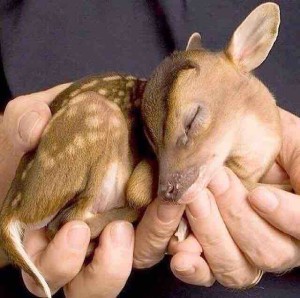Lori Robinson's Blog, page 7
November 13, 2018
Helping Animals Made Easy
Do you wish you had more money to donate to help animals? Then do this:
HELPING ANIMALS IS THIS SIMPLE:
Every time you shop on Amazon use this Saving Wild Link (this is NOT the smile program):
and a small percentage of the cost of your purchases will be distributed to our bush school program and small NGO’s around the world helping animals.
Be stress-free this Holiday/Giving season knowing that while you shopped, you also donated to help animals. It’s a win-win.
The Best Part:
1) You will still be using YOUR personal Amazon page that you always shop from.
2) Once you save the link to your bookmarks or desktop there is nothing extra you need to do. Just use SavingWild’s Link to Amazon, and Amazon will know you want to give back to SavingWild.
3) What you buy and who you are is completely confidential.
4) Your donation gets doubled. Each year I personally match the amount of money received from the Amazon program before donating it.
5) Feel great this season of giving, knowing you contributed to helping animals around the globe.
Try it now:
1) USE OUR LINK
2) SAVE THE LINK on your Desktop to use every time you shop on Amazon.
That’s it!
Make your shopping count for something wonderful!
Please share this with anyone you know who shops on Amazon and is interested in helping animals.
With Love and appreciation for all you do for our planet’s furred beings.
LvL
The post Helping Animals Made Easy appeared first on .
October 19, 2018
The Rock with an Elephant Soul
My safari guide says, “there’s a rock painting” he wants to show me. I’m in the Northern Rangelands region of Kenya, staying at Sarara and their newer sister camp, The Tree House, for some down-time between two safaris I’m leading.
I’ve seen African rock paintings before – the Bushmen’s faint drawings, of elongated giraffes and eland, eroded by weather and illegal human touch. So I’m looking forward to these.
We drive over small sage-scented scrub as Bashia searches for familiar landmarks. There will never be any signs to find this place. “There’s no clearly worn path yet because the painting was only completed two days ago. Not many people have seen it.”
This area is not on the popular safari circuit. It has long been a favorite haunt for poachers, followed by trophy hunters, who consequently wiped out the wildlife. But, in recent years the local Samburu people and others are reversing that trend by bringing in tourism to boost the local economy. It’s working. The animals know it’s safe to come back.
We pull up to a massive boulder, the size of which is just shy of the width of a soccer field. At first I don’t see anything but a reddish, gray and brown tinged rock face. A beginner-rock-climbers dream. But as I stare, she comes into focus. A massive elephant head, extending the full depth of the boulder, painted by someone who obviously has a feel and love for his subject and his canvas.
I back away, so I can take in the enormous painting. The elephant is staring right at me, her ancient energy embedded into the permanency of this rock.
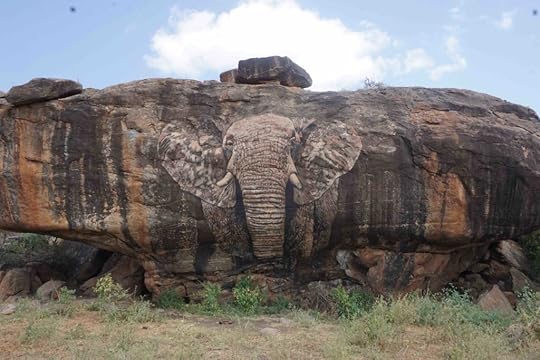
My guide does not know much about the artist or why he chose this spot. I find out later that Youri Cansell, a young Frenchman also known as Mantra Yoz, is famous for his photorealistic detailed works and is one of the world’s top contemporary graffiti artists. (See some of his images here.)
Growing up, Youri wanted to be a naturalist. Now, he makes larger-than-life murals of his favorite beings he found in Nature as a child – butterflies, frogs, raptors, and… an elephant. And he does them without the use of grids.
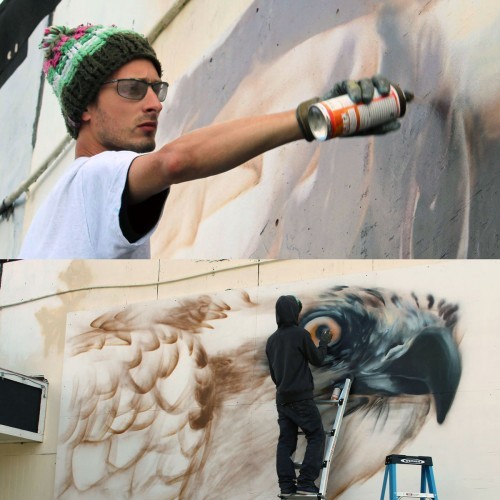 The artist on his typical canvas in a city on a wall.
The artist on his typical canvas in a city on a wall.Here he has given this rock a soul. I can feel it. It’s a homage and honoring of the largest land animal on earth. An apology for what has, and is still, happening to their kind. A big elephant size message to welcome elephants back to this land.
But at this moment I don’t want thoughts and explanations for what is in front of me. I simply want to stand in the presence and sacredness of this collaboration between artist, rock and elephant.
I imagine that for eons into the future, both the Samburu people, and the wild elephants, who randomly find this spot, will do the same. They will stand right here, in awe.
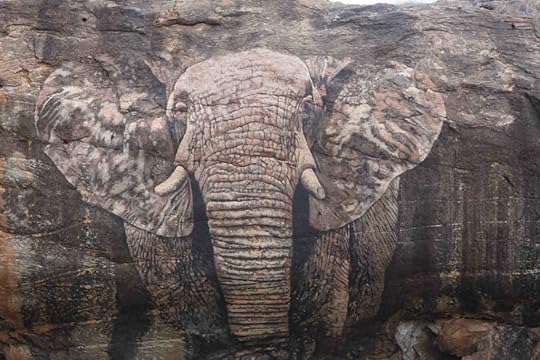
I would love to hear your reaction to this elephant rock painting. Please let me know in the comment section below.
The post The Rock with an Elephant Soul appeared first on .
October 2, 2018
Bush School inspires children in Africa
The future stewardship of Africa’s animals and open spaces depends upon the local people. Yet, most children in Africa have never been to their National Parks (mostly due to lack of transport and entrance fees), or have only encountered wild animals during situations of conflict, like crop or livestock raids.
People do not protect (or tolerate) something they have
1) no positive direct experience with
2) no emotional attachment to, and
3) no knowledge of.
“Tolerance and compassion are learned behaviors.” Nelson Mandela
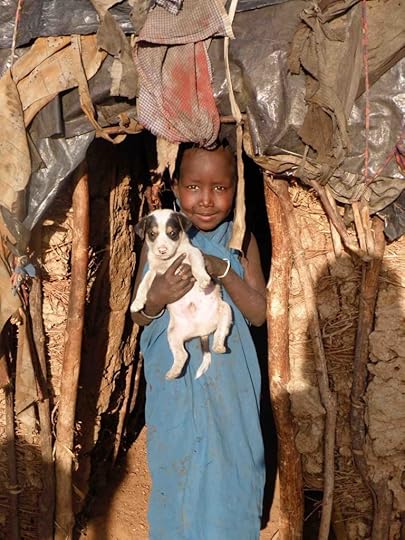 Understanding Animals as individual beings with feelings is part of the bush school experience.
Understanding Animals as individual beings with feelings is part of the bush school experience.People develop compassion and are inspired to protect animals if given the opportunity to experience them in a positive way.
For these reasons, for the past decade, Saving Wild has been investing in the next generation of wildlife conservationists.
We sponsor Bush School Programs that give African youth the experience of connecting to and learning about the natural world.
Through classroom instruction, field studies, and mentorship engagement the bush school programs instill an appreciation of wildlife, biodiversity, and the importance of stewarding the land and animals for future generations.
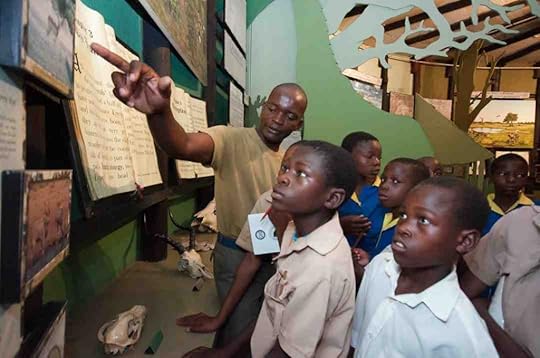 Classroom learning supplements wildlife drives for Bush School program.
Classroom learning supplements wildlife drives for Bush School program.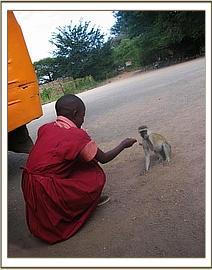 Turning fear into compassion.
Turning fear into compassion.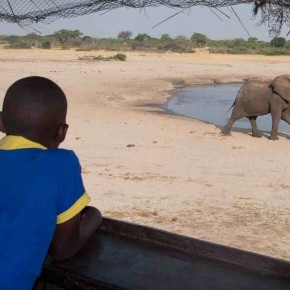 Seeing elephants for the first time during Bush School Photo: Molly Feltner
Seeing elephants for the first time during Bush School Photo: Molly Feltner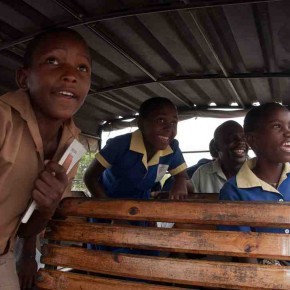 On the bus at Bush School. Photo: Molly Feltner
On the bus at Bush School. Photo: Molly FeltnerFollow up research shows that spending time with wildlife in their natural habitat, combined with an experiential learning of nature’s complex ecology, graduates are more emotionally invested in wildlife and wild places.
Bush school attendees identify poachers to the police, take apart traps and let animals free from snares in forests near their villages. And they keep their environment cleaner.
Graduates from bush school grow up to be Park Rangers, Conservation Advocates, and Wildlife Safari Guides.
Through its bush school program Saving Wild has sponsored thousands of children over the past 7 years in Botswana, Tanzania, and Zimbabwe. And Kenya has just been added to that list with a program in the Masai Mara, and a soon to be launched one in Amboseli National Park.
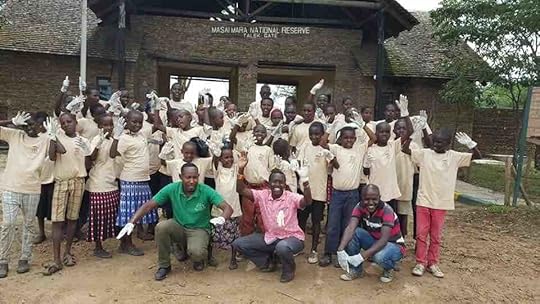 Bush School trash clean-up project.
Bush School trash clean-up project.We would love your help.
A donation of just $100 supports one student through bush school. A donation of $1,000 supports a busload of children.
Your donation to Saving Wild is tax-deductible through our fiscal umbrella: The Key Biscayne Foundation.
Help us secure the future of Africa’s wildlife and wild places.
Donate Here:

The post Bush School inspires children in Africa appeared first on .
May 27, 2018
George Schaller Doesn’t Deal in Hope
George Schaller is a conservation nomad. He has saved more species in more countries than any other wildlife conservationist I can think of. I was honored to sit down with George and bring you some of his wisdom, practical advice, and inspiration (not hope!). Read on for highlights of my time with the legendary George Schaller.
Starting in 1956 when he joined Olaus Murie to study and protect an area that would become the Arctic National Wildlife Refuge, George Schaller’s career has resulted in protection for snow leopards, jaguars, giant pandas, tigers, mountain gorillas, and Tibetan antelope.
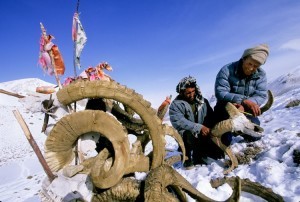 George Schaller in the field in Tibet.
George Schaller in the field in Tibet.Unusual for a field biologist, he has always believed that without emotion you can’t understand the animals you are observing. “You have to look at them with empathy and intuition to try to get into their world,” he says. Schaller always named his research subjects (similar to what Jane Goodall would later do with chimpanzees) rather than assigning them numbers like he and his colleagues were taught to do.
“Things don’t look so good when you look at the fact that over 90 percent of land vertebrates are domestic livestock and people. Wildlife is rather outnumbered. I can give endless statistics about all the bad that is happening, but I focus on where I can have an impact. I pick areas where I can do some good,” says Schaller. “I don’t deal in hope. I deal in action to accomplish something. I don’t sit around hoping.”
Happy Birthday George Schaller!
Yesterday, May 26, George turned 85. Although he sees himself now more as an “ecological missionary,” preaching the gospel of conservation, he is still traveling the globe saving wildlife and wild places. And he thinks all of us can and should be, taking action. “Get involved. Whether it’s in a local cause, writing to your politicians, or studying the sciences, we all have a role to play in saving the planet. All we need to do is do something!”
For more on George Schaller, read Wild Lives, Leading Conservationists on the Animals and Planet They Love.
The post George Schaller Doesn’t Deal in Hope appeared first on .
May 22, 2018
“Our Wild World” Inspirational Interview
Are you depressed about the state of the planet and its wildlife? In this inspirational interview on the radio show Our Wild World, Eli Weiss and Lori Robinson offer practical antidotes for feelings of ecological despair.
By shifting our perception, and embracing nature, the way forward is (literally) right beneath our feet. We are an intricate part of the amazing web of life. We are part of the biodiversity. We are not just the problem, but also the means to solutions.
When we focus our bodies, hearts, and minds, in Natures deep sense of ‘Home’, we are given the inspiration and ability to heal ourselves and the planet.
“If somethings not gone, that means it can still be saved.” Thomas Lovejoy from the book, Wild Lives.
Want more inspirational quotes and interviews from some of the world’s leading conservationists? Both of my books, Saving Wild, foreword by Jane Goodall, and Wild Lives, foreword by Carl Safina offer heaps of hope, practical solutions, and advice. You can find them on Amazon.
**Elephant photo courtesy of Laura Voit.
The post “Our Wild World” Inspirational Interview appeared first on .
“Our Wild World” interview
Are you depressed about the state of the planet and its wildlife? In this conversation on the radio show Our Wild World, Eli Weiss and Lori Robinson offer practical antidotes for despair, and demonstrate that by embracing our connection to nature we can find all the answers we need to do the work necessary for saving the planet.
**Elephant photo courtesy of Laura Voit.
?
The post “Our Wild World” interview appeared first on .
May 20, 2018
Lewa, A Model for Conservation Success
The Lewa Wildlife Conservancy occupies a relatively small 62,000 acres in northern Kenya but its role as a conservation innovator extends far beyond its borders.
The Conservancy and surrounding areas contain some of the last pristine biodiverse wilderness in Kenya, most of which is in community-owned land. Therein lies the conservation challenge, as well as Lewa’s success through combining wildlife protection, community development, and sustainable tourism.
I began leading safaris to Lewa a few years ago and, because of its uniqueness to other parks, I have since made it a must visit destination on all of my Kenya itineraries.
On my last visit I sat down with Lewa’s co-founder, Ian Craig, whose story is one of twenty in my book, Wild Lives. Here are some highlights from my interview.
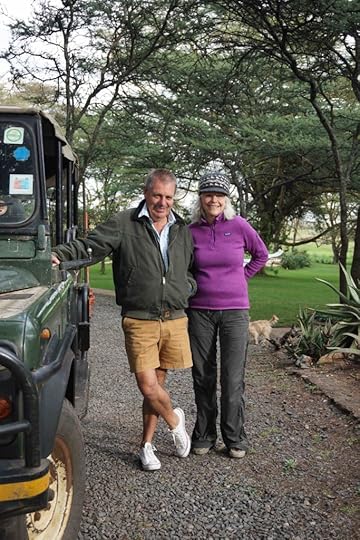 What a pleasure to be able to spend time with Ian Craig in Lewa for my book, Wild Lives.
What a pleasure to be able to spend time with Ian Craig in Lewa for my book, Wild Lives.“Lewa was envisioned to act as an anchor that demonstrates and facilitates community-centric-conservation,” says Ian. For example, Lewa released black rhino into the nearby Sera Community. Although native to that area, the black rhino had not been seen there in over 30 years. Sera made history as the first community in Kenya to be responsible for managing a viable black rhino population. “This model of conservation offers a viable way of life for communities that share their land with wildlife by empowering them through community programs,” says Ian.
Expanding on the Lewa model, Ian started the Northern Rangelands Trust. It promotes the collective management of ecosystems for improved human livelihoods, biodiversity conservation, and enhanced rangeland management to over 2 million hectares.
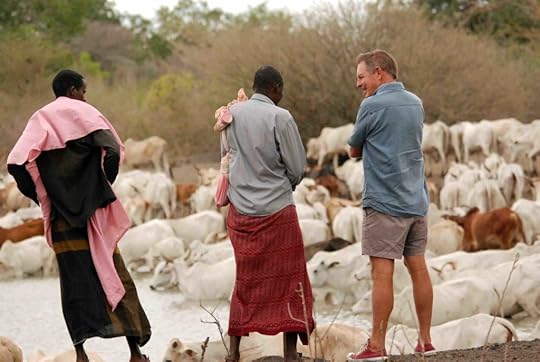 Ian Craig working with Community leaders. Photo courtesy of Juliet King.
Ian Craig working with Community leaders. Photo courtesy of Juliet King.This is all great news for the area’s wildlife, which includes the endangered black and white rhino, reticulated giraffe, hirola, Grevy’s zebra and the shy sitatunga antelope. They are not only protected in these rangelands, but can migrate with less conflict.
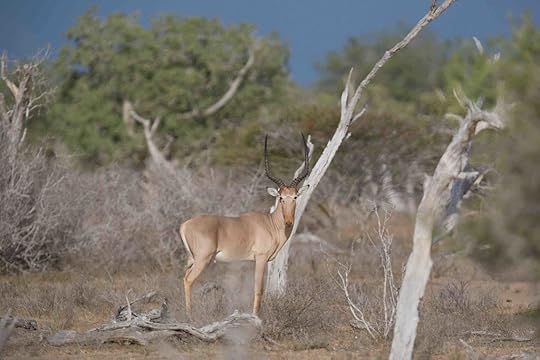 Photo of Hirola courtesy Kenneth Coe
Photo of Hirola courtesy Kenneth CoeThe elephant underpass is another example of Lewa/NRT’s innovative projects. A one of a kind in Kenya, the underpass links the forest ecosystem of Mount Kenya with the savannah ecosystems of Lewa and Samburu. Previously this historic migration route was blocked by human development. Now elephants and other wildlife use the underpass to cross the busy highway that stretches from Meru to Nanyuki.
Ian Craig was born in Kenya. To learn more about how Ian is shaping Kenya, and how Kenya shaped Ian, check out his adventure-filled life story in Wild Lives, Leading Conservationists on the Animals and the Planet They Love.
To join me on safari and experience Lewa first hand, send me an email to lorisavingwild.com.
The post Lewa, A Model for Conservation Success appeared first on .
April 20, 2018
Earth Day, Every Day
When is Earth Day? This year it falls on April 22. It is a day to celebrate, praise and notice Mother Earth. A day to remember all she is, all she does, and all she gives. A reminder that without Mother Earth, none of us would be alive.
For Earth Day, and every day for that matter, go outside. Take some deep breaths. Soak up the sunlight. Taste the air on your tongue, feel the wind kiss your cheeks, let your bare feet meet the dirt, grass, and sand.
Go for a walk. Look, listen and smell the world around you. Engage all of your senses and notice what you often don’t. Notice the breathtaking display of flowers and bushes, grasses and trees – everywhere. Breathe in their scents. Notice the chirps, buzz and clicks of birds, insects, and squirrels. What are they saying? Notice the colors – every shade of every color, everywhere.
Say outloud, hello natural world, I see you.
And then try to comprehend the miraculous biodiversity of life. Try to imagine all that Mother Nature is, all that Mother Nature has and all that Mother Nature does for us. Really try to understand—reach and bend and stretch until your heart and mind are gaping.
Then celebrate her.
Kiss the trees. Dance in a meadow. Sing with the birds. Play in the dirt. Join the animals and the birds and the angels, the silent song of the flowers and trees in praise of her.
And honor her with a commitment to action.
Pick up litter, plant a garden, feed the birds, remove a fence, let a weed grow, let a raccoon share your patio, save a spider.
Let her know you are grateful…. So grateful.
Wish Mother Earth a happy Earth Day and make a promise that when people ask when is Earth Day, you will answer, “Every day!”
The post Earth Day, Every Day appeared first on .
April 6, 2018
The Seabird’s Cry ( Book Review)
When the author of The Seabird’s Cry was eight years old his father took him to visit a cluster of isolated, wild islands called the Shiants in North West Scotland. It was there that Adam Nicolson’s fascination with seabirds began.
“I think of them [the seabirds] strung and beaded around the cliffs….as the living skin of our ocean shores. They are the florid, rowdy summer clothing of what would otherwise be barren rock. I love the seabirds, partly because…. they [are] happy to display their beauty in the most demanding moment life can offer,” writes Nicolson.
350 species of Seabirds
Of the 11,000-odd species of birds, 350 have taken to the sea. Each chapter in The Seabird’s Cry is devoted to one group of ten different types of seabird, revealing intimate details of their lives. “The whole seabird is the vehicle of intelligence, its memory, its eye, it’s coloring, its aggression, its fear, its beauty.”
I am embarrassed to admit that before reading The Seabird’s Cry I lumped seabirds, along with land birds, into one large category: Birds. After reading this book, I know better. All birds are individuals within their species of similar characteristics. But because of the difference in their environments seabirds are dissimilar to land birds.
Seabirds vs. land birds
Nicolson does a great job of individuating the seabirds – the puffins are unique from the shearwaters, the gulls unique from the albatrosses. “For all their differences, a certain way of life unites them, different from most [land] birds: not living a year or two but, in the very oldest albatrosses, up to eighty or ninety years; not raising chicks the season after they are born, but slow to mature, waiting many years before laying an egg; not hoping against hope with eight or nine eggs in each clutch, but often raising a single chick, long incubated in the egg, long fed in the nest; rarely moving on from one partner to the next but often faithful for many years, each parent relying on the other to raise the next generation.
“These [seabirds] life-histories are shared, significantly, only by the vultures, which must also look for rare concentrations of prey in the wide and hostile sterilities of the world, not at sea but in the desert.
These are the edge-choosers, creatures whose lives have stepped beyond the ordinary into environments of such difficulty that they can respond only with a slow, cumulative mastery, which amounts in the end to genius.
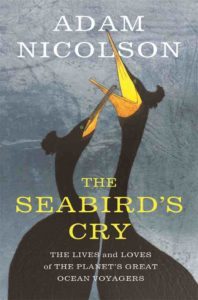
Understanding seabirds help us to know all animals a little more intimately. Nicolson reminds us, “Unless we accept the multiplicity… with which every creature perceives the world in ways that are unique to it, we will inevitably end up ranking everything on a single scale, and that scale will be measured by our own human standards.
“Intelligence in animals … does not consist merely of tool-making, adapting bread as fish bait or curling leaves to extract ants from a hole.
“If you are stuck in that anthropocentric vision of nature,” writes Nicolson, “you will inevitably think that the more like humans any animal seems to be and the more linguistic and even technological skills they seem to have, the cleverer they are.
“We have no monopoly on intelligence. We would not know how to exist in a form that is not our own.”
These birds are the harbingers of the state of the oceans. Unfortunately, like most other non-human animals their numbers are in decline, by some measures showing a drop in seabird populations of 2/3rds over the past 60 years. In the chapter about shearwaters, I found his explanation about why some birds eat plastic sad but illuminating.
The stories and facts in The Seabird’s Cry were taken from scientists who have spent days and months living on cliffs studying these birds, and from available new technology small enough to attach to birds to understand their flight patterns, their relations to other birds, and their breeding habits.
Some of the experiments, especially those performed decades ago, made me cringe. But it is this new knowledge described in The Seabird’s Cry that will put me in a state of awe the next time I greet a flock of seabirds while walking along the ocean’s edge.
For other nature focused books I love, check out my favorites book shelf.
The post The Seabird’s Cry ( Book Review) appeared first on .
March 28, 2018
Best Camera and Binoculars for a Safari
The two most frequently asked questions I get from my safari clients before their African safari are: What is the best camera to bring on a safari? And, should I bring binoculars?
I am not a techy person so I answer my clients by telling them what I use, and what I have seen hundreds of clients use over the years. In this post I am sharing with you the same information I give to all my safari clients. I hope it is helpful to your search for the best camera and binoculars for a safari.
CHOOSING A CAMERA FOR YOUR SAFARI
What camera to bring seems to be one of the top decisions for safari goers. It makes sense. You may go to Africa once in your lifetime, and from what you have seen from other peoples African photos or in magazines and animal planet shows the wildlife in Africa gives you many opportunities to capture amazing photos.
That is all true.
You’ll be surprised to know that not everyone takes a camera when they go on safari. One of my clients, who has been on two of my safaris, forgoes a camera. She says she likes to just be with the animal in the present moment without worrying about getting the best photo.
I do recommend that people get out from behind their cameras at least some of the time. It is a different feeling when you are sitting with the animal rather than trying to capture a memory for later.
I doubt many people would want to come to Africa without a camera. Even the woman I mentioned above asked the group to share a few of their favorite photos with her via email once everyone got back home.
It’s hard to not want to capture everything on camera so you don’t forget it. A lot happens on safari. That being said, there are so many options for cameras. Some people do just bring their smartphones and rely on using that as their camera. But again, not many people do that.
The two most popular cameras that people bring are DSLR’s . They are great if you want to bring different lenses. These cameras are generally for people who are more serious about photography. There is a relatively new kind of camera called a mirrorless. The advantage is that they are lighter than the DSLR and still allow you to have different lenses. This is what I use and I am very happy with it.
There is a newer model since I bought mine. Here is the link.
Another option is to buy the smallest all-in-one camera with the largest magnification available. These are great cameras. They are lightweight, not expensive, and take great shots. Canon makes this great one.
BEST BINOCULARS FOR A SAFARI
My father is a world-class birder. I have never bought a pair of binoculars because he gives me his hand me downs. One pair has been with me on 7 safaris. It’s a basic Nikon.
I spend more time behind my binoculars then I do behind my camera. To get a great camera shot the angle and lighting and behavior of the animal has to be just right. But no matter what the animal is doing, or how bad the lighting, I am always fascinated by just being with the animal. And binoculars enhance that experience.
There are often an extra pair of binoculars in the safari truck, but not always. And if there is a pair, they aren’t necessarily of good quality so I do recommend bringing your own. If you have a decent pair, then just bring those. Most of the time on safari you will be close enough to the animals to watch them without binoculars. If you do use your binoculars you will be scoping out the blood on the lions mane, or the flies around the hyenas mouth, or the toenails of the elephants.
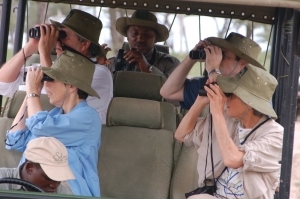
If you don’t own a decent pair, here is one that many birders own and love: The Nikon Monarch
Keep in mind that driving around in the safari trucks kicks up a lot of dust. So you will want to have protective bags and covers for your camera, lens and binoculars.
For the perfect hat to take on your safari check out my post here.
*Featured image of elephants by safari client Laura Voit.
The post Best Camera and Binoculars for a Safari appeared first on .


